Back in the day, the management of Visvesvaraya Iron and Steel Limited (VISL) in Bhadravathi in Shivamogga district offered coffee to its employees during work-shift breaks. However, for the workers belonging to the Scheduled Castes, a separate container was placed. They were not allowed to touch the container. Instead, they had to wait for someone from the ‘upper’ caste to pour coffee into their individual cups.
For years, this discrimination continued in the factory. A few employees raised their voices against the untouchability practices on the factory campus. Professor B. Krishnappa, who was teaching at Bhadra College in the town, was the guiding force behind the protesting employees. It was under his leadership, Dalita Sangharsha Samiti (DSS) -- that went on to play a significant role in shaping Karnataka’s political and cultural sensibilities -- took shape in 1974 with its office in the Old Town of Bhadravathi.
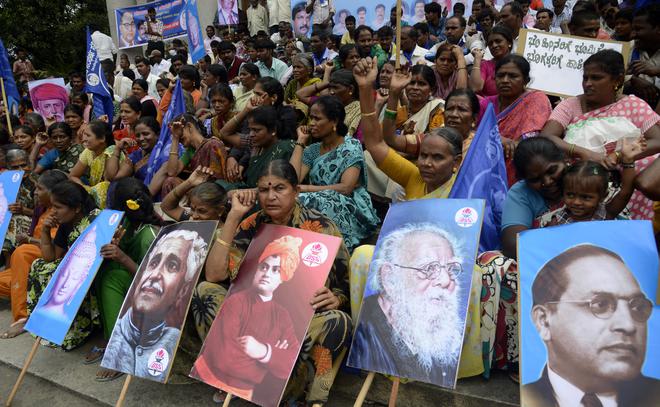
The ground was fertile
By then, Karnataka had witnessed many events that forced the oppressed castes to come together and oppose atrocities. The anti-caste movement was gaining ground, and the Samajvadi Yuva Sabha was also active in the early 1970s. B. Basavalingappa, a senior minister in the Devaraj Urs-led cabinet, attracted criticism from the ‘upper’ castes for his comment on Kannada literature. In a seminar in Mysuru in November, 1973, the minister described Kannada literature as boosa (rice husk, a cattle feed). There were a series of protests across the State against his statement, and in several places the protests turned violent. Finally, Basavalingappa was forced to resign as minister. The issue gave enough impetus to writers and artists from deprived sections to join hands. They convened a conference in Mysuru and invited noted poet and Jnanapeeth awardee Kuvempu to inaugurate it.
Meanwhile, in Bhadravathi, Krishnappa had begun organizing people from oppressed sections. He wrote pamphlets condemning injustices done to employees of VISL in Bhadravathi. He registered Dalit Sangharsha Samiti in January, 1974. N. Giriyappa, who was an employee of VISL, was the president, while Krishnappa, became secretary.
Creating awareness
The DSS conducted workshops for the students. Experts took classes on the rights of the oppressed castes and introduced students to Dr. B.R. Ambedkar’s speeches and writings in these workshops. Through many such workshops, hundreds of youths, particularly college students, joined the DSS.
“Prof. Krishnappa regularly met students in hostels and spoke to them about practices of untouchability and the ways to achieve emancipation. That motivated many students to join him,” recalled M. Gurumurthy, State convener of Karnataka DSS. He joined the DSS in 1981 as a student in Shivamogga, and took part in many movements that organization led. Now, he leads the 50-year-old DSS.
The youth who came into contact with the organisation in their student days motivated like-minded people to join the forum in their villages. A few, including Chandraprasad Tyagi, who was an employee at VISL, gave up jobs to lead the organization in their native places. Hence, within a span of a few years, the DSS grew as a strong pressure group in the State.
In due course, the DSS drafted a constitution and adopted it. It defined the word Dalit as a group of people who are untouchables and discriminated against on the basis of caste. Its primary objective was the liberation of Dalits from cultural, sociological, and economic inequalities through the path of non-violence.
Protests over land issues
Besides protesting against the atrocities against Dalits and women, the DSS motivated its workers to engage in land-related struggles. The DSS led a series of protests for the Dalits of Sidlipura in Bhadravathi taluk and Bidare Kaval in Hassan and many other places. An industrialist had acquired land that belonged to Dalits in Sidlipura. The Samiti staged protests in favour of the landless for several months and succeeded in the protest.
This movement culminated in the State government passing a law to prohibit the transfer of certain lands -- Karnataka Scheduled Castes and. Scheduled Tribes (Prohibition of Transfer of Certain Lands) Act, 1978.
“In many cases, either through ignorance or coming under pressure, the Dalits lost land granted to them for a paltry sum. This law ensures they retain their land. This was the historic agitation that prompted the government to bring in the law. Similarly, Krishnappa was the first to raise a voice for the grant of land to bagair hukum cultivators,” said Mr. Gurumurthy. He also recalled how he and his associates fought with members of the Hindutva organisations, condemning the assault on Dr. Polanki Ramamurthy, a professor of English, during his lecture in a college in Shivamogga in the early 1980s. Ramamurthy faced criticism from Hindutva factions after he wrote the book Seethayana.
Protests in many hues
The DSS did not restrict itself to questioning atrocities against Scheduled Caste alone, but stood against various other forms of oppression. For instance, when a person who belonged to the Kumbara, potter community, a backward class, was murdered, and his daughter was raped in Kolar taluk in 1979, the DSS took out a historic march from Kolar to Bengaluru, seeking justice for the victims. The family was tortured as they refused to give their land to a landlord. Hundreds of workers from different parts of the state took part in the march and suffered injuries in police lathi-charge.
Another major protest that the DSS led was in March 1986, when the organization decided to convince devotees of Renukamba at Chandragutti in Soraba taluk, not to offer bettale seve (Nude worship). Under the leadership of Prof.Krishnappa around 300 activists from different parts of the state had gathered on the bank of the Varada River to convince the devotees to wear clothes to offer their prayers. Their gesture did not go well with the people, who were in support of the custom. They targeted DSS workers and the police, who were also in support of the activists. The angry mob tortured the police. The incidents forced the State Government to hold a judicial probe by Chikkamagaluru district judge G. Channaveerappa. The risk the activists took did not go to waste. The tradition of naked worship was stopped.
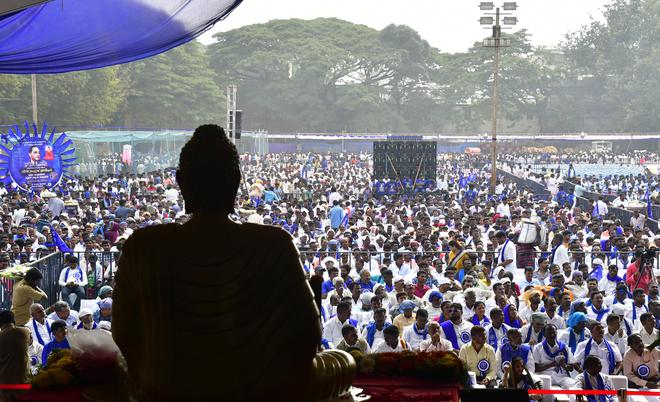
Fights and their outcomes
The organisation fought against atrocities against Dalits reported across the state. “The activists hit the streets opposing the bonded labour system, resulting in violence against them in many instances. But these efforts resulted in the passing of the law on the prevention of atrocities against Scheduled Castes and Scheduled Tribes in 1989. The DSS and its activities have brought about significant changes in the state,” said Prof. B.L. Raju, who teaches English at Ripponpet in Shivamogga district.
Devanura Mahadev, Siddalingaiah, N. Venkatesh, Kotaganahalli Ramaiah, M. Venkataswamy, Mavalli Shankar, Sridhar Kaliveer, Lakshminarayana Nagavara, Guruprasad Keragodu, Indudhar Honnapura, Chandra Prasad Tyagi, M. Jayanna and many others have led the movement, shouldering responsibilities at different stages. The leaders had differences over joining politics and facing the elections, and other issues. Gradually, many senior leaders left the organization to form their own factions. Hence, at present, there are many forums that are splinter groups of the original DSS.
Gurumurthy said that their unit is planning to hold many events to mark the 50th year of the organization.
The DSS and Kannada literature
The DSS and Dalit movements have contributed immensely to Kannada literature. Writers including Dr. Siddalingaiah, a noted poet, and Devanura Mahadeva, novelist and storyteller, have been involved in the activities since the early 1970s. They were instrumental in organising the conference of Dalit Writers and Artists in 1976. Along with Krishnappa and others, they played a role in holding the first convention of Dalit students in Kolar in 1983.
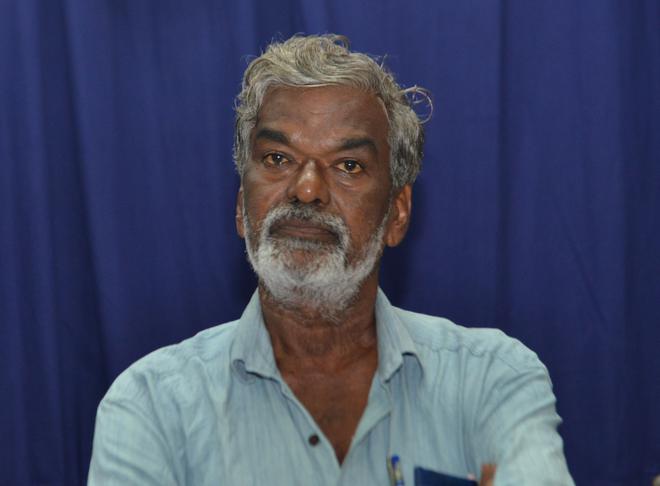
Siddalingaiah’s poems reached a larger audience through the activists of the DSS. His poems were instant hits, becoming anthems of sorts of the movement. The activists of DSS would begin their programmes singing Siddalingaiah’s poems.
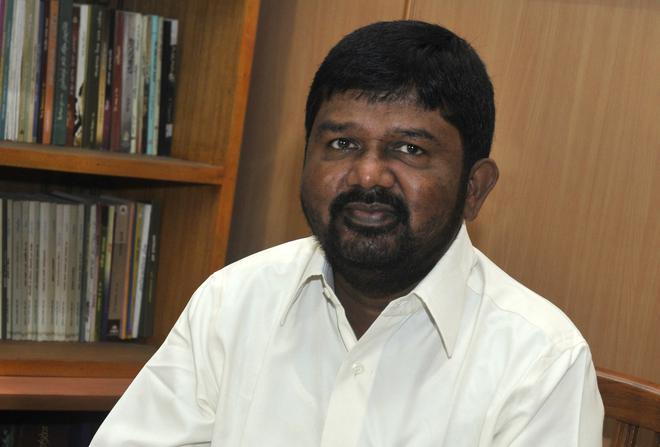
Noted critic D.R. Nagaraj, in his The Flaming Feet, says, “There are two different modes of Dalit writing and they can be called the schools of ‘social rage’ and ‘spiritual quest’.” He puts the writers – Siddalingaiah, Mullur Nagaraj, Mogalli Ganesh, Aravind Malagatti, Ma.Na. Javaraiah, Munivenkatappa, Gangaram Chandala, Chinnaswamy and Indudhara Honnapura -- in the school of “social rage”, which concentrates “basically on the experiences of anger, agony, and revolutionary hope.”
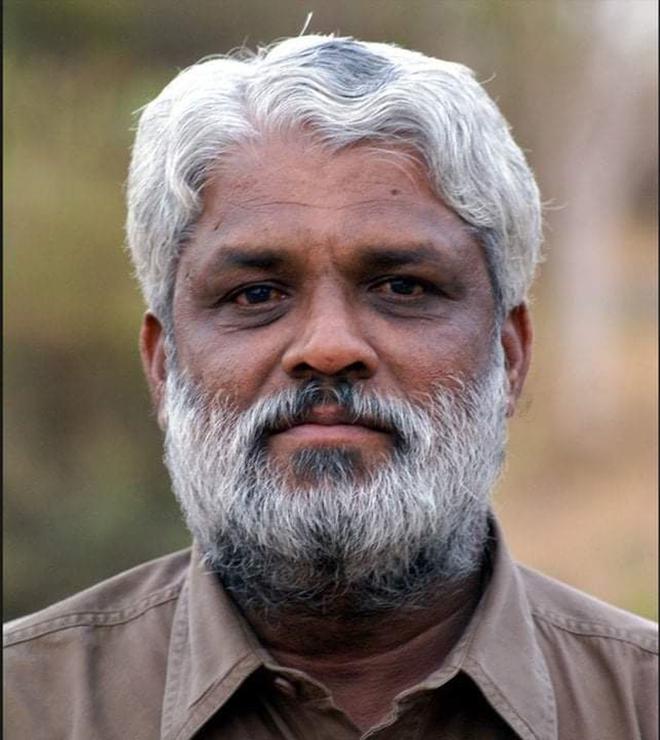
Dr. Nagaraj includes Devanura Mahadeva, K.B. Siddaiah and Govindaiah in the school of “spiritual quest” because their works tried to “understand the world of poverty and untouchability in terms of metaphysical dismay over the nature of human relationships.”
These writers have not only enriched Kannada literature through their creative works, but also worked towards bringing Dr. B.R. Ambedkar’s writings into Kannada.







